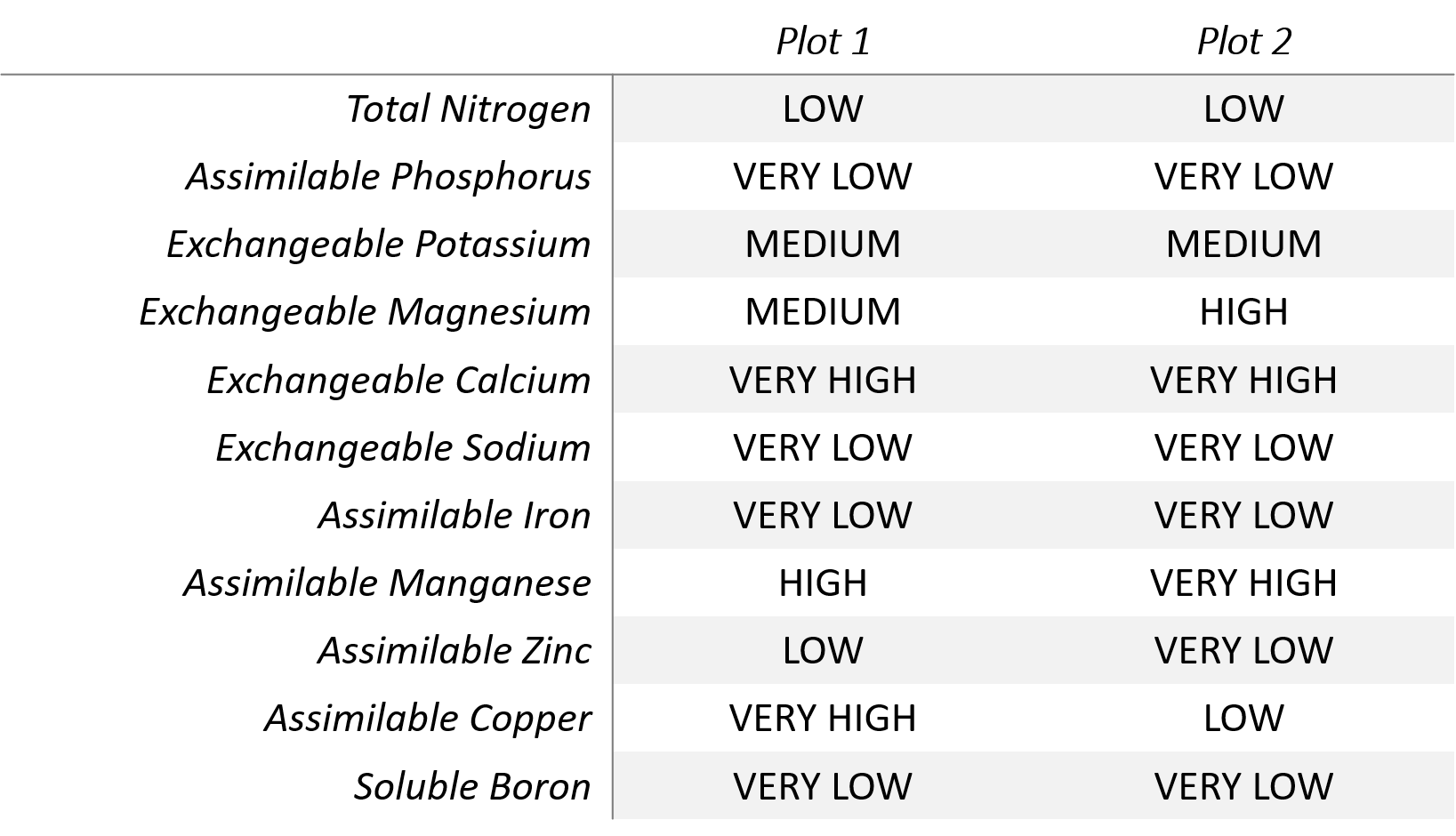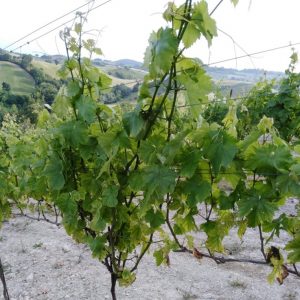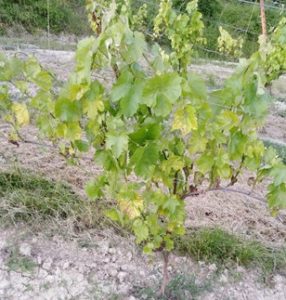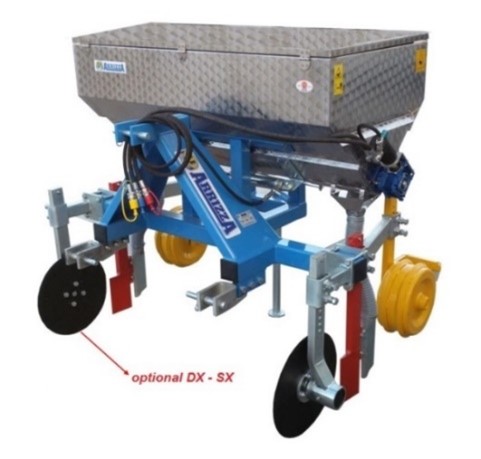A correct fertilization of grapevine prevents and avoids potential damage caused by nutritional deficiencies.
Fertilizing at the end of the production cycle promotes an optimal plant development and a qualitative improvement of grapes.
Moreover, precision agriculture, the use of satellite systems and prescription maps allow to optimize the use of fertilizers.
Autumn fertilization in post-harvest, before the fall of leaves, is a cultivation practice that should not be underestimated. It is the ideal moment to reintegrate the soil with the nutrients that the plant has used during the production cycle and to allow the grapevine to create reserves in order to survive winter and the next season.
Fundamental macronutrients: nitrogen, phosphorus and potassium must be available for the plant at the right time in order to guarantee an adequate nutrition since the earliest stages. Phosphorus is of primary importance: it is not a very mobile element in the soil, therefore it is necessary to apply it not only in the right quantity, but also to place it in a way that it will be assimilated quickly by plants, thus avoiding potential deficiencies and related symptoms.
Damage due to nutrients deficiency occurs with a reduction in photosynthesis, leaf yellowing or necrosis, underdeveloped plants, low-quality grapes and, in the worst case, production loss. So, it is necessary to integrate all nutrients through fertilization, so that the soil becomes rich and provides the plant with all the nutrients it needs during its biological cycle.
After harvest, the next step is fertilizing the grapevine, therefore Cerea FCP would like to share the importance and the advantages of autumn fertilization.
Our suggestions for a proper vineyard fertilization
In Cerea FCP, we would like to support you in the choice of the ideal fertilizer according to your vineyard’s needs and to help you throughout the whole production cycle of your plants. For this reason, in the last few years, we have developed a product/service package to optimize the fertilization of grapevine. The package includes:
- granular and special products suitable for each phase of the vegetative production cycle
- a satellite tracking system which allows to monitor the plot and to evaluate various technical parameters remotely. For more information, you may read the dedicated article.
In our grapevine line, the two recommended products for fertilization are Vinfrutto at a dosage of 300 kg/ha and Bluactive at a dosage of 400 kg/ha.
Vinfrutto is an organo-mineral granular compound NPK 8.6.14 fertilizer with 3% calcium, 2% magnesium, 30% soluble sulphur and microelements (boron, iron, zinc), 2% organic nitrogen and humic acids.
The application of Vinfrutto 8.6.14 in autumn guarantees:
- a slow release of nitrogen with a fractional absorption over time
- a balanced C/N ratio which, together with humic acids, stimulates the microbiological activity of the soil
- a better assimilation of phosphorus, since it is linked to humic acids
- robustness of tissues thanks to the presence of calcium
- enhancement of metabolic processes and lower influence of nutritional deficiencies thanks to the presence of magnesium, sulphur and microelements
- an improvement of fruit set because of the presence of potassium and soluble sulphur
- an increase in the Brix degree since zinc and potassium are involved in the production processes of sugar
Blueactive is a mineral granular compound NPK 11.11.16 fertilizer with low contents of chlorine, 2% magnesium, 30% soluble sulphur, boron and zinc.
The application of Bluactive 11.11.16 in autumn guarantees:
- a controlled release of nutrients, minimising losses
- an adequate nutrition since the earliest stages
- a better absorption of phosphorus as a result of its solubility
- a lower influence of nutritional deficiencies thanks to the presence of microelements
- an increase in the photosynthetic activity because it contains magnesium and sulphur
- a better fertility of the flower because of the presence of boron and an increase in fruit set thanks to potassium and soluble sulphur
- an increase in the Brix degree since zinc and potassium are involved in the production processes of sugar
The opinion of our clients is our best slogan
In Cerea FCP we believe that the best way to endorse the effectiveness of our products and the quality of our work is through our clients' feedbacks.
We would like to briefly share Cerea FCP experience in 2019 in collaboration with a wine company located in the Marche hills. We are in a Verdicchio vineyard where, at the end of the production cycle, deficiency symptoms, low yields and of poor quality emerged.
According to the company's agronomist, Filippo Paolasini, the vineyard presented a few areas with vegetative decay and a widespread leaf yellowing.
In order to further explore the problem and give a solution, we carried out a study on a soil analysis of 2015 provided by the company and an analysis of foliar petioles (spring 2019) by dividing the plot in two areas.

According to the results of the soil analysis, it can be observed that the sample plot 1 has a clay-loam texture (36% clay content). It is a strongly calcareous soil with a high percentage of active limestone (174 g/kg), a pH of 8,1 and a CSC of 21.5 meq/100g. This, in combination with a clayey soil, highly reduces the effective availability of nutrients (insolubility caused by the formation of salts)
Concerning the sample plot 2, we may notice a clayey texture (48% clay). It is a strongly calcareous soil with an excess of active limestone (168 g/kg) and a pH of 8,1. Its CSC is even higher, 24,9 meq/100g. However, as in the previous case, this, in combination with a clayey soil, highly reduces the effective availability of nutrients.

Moreover, in the table above, it is noticeable that assimilable phosphorus in both plots is very low. This is mainly due to the strong presence of active limestone and a high pH equal to 8,1. Phosphorus is not a very mobile element in the soil and its absorption is strongly influenced by an alkaline pH, causing insolubility through the precipitation of phosphorus in calcium phosphate.
Afterwards, in the 2019 campaign (spring), we have analysed the foliar petioles harvested right after flowering (leaf opposed to the grape) so as to evaluate their content of calcium, magnesium, copper, iron, zinc and manganese (see table 2).

After comparing analysis results with data shown in bibliography, we may affirm that Calcium and Magnesium present lower values than optimal ones [1] (3.000-5.000 ppm for magnesium and 10.000-30.000 for calcium). On the contrary, as regards Copper and Zinc, the values obtained are superior, while Iron and Manganese ones are average.
Concerning exchangeable magnesium, even if the soil analysis registered an average value in TC1 and a high value in TN2, with an optimal Mg/K ratio in both plots (3,3 e 4,1), the physical and chemical characteristics of the soil (clayey texture, active limestone and high CSC, pH 8,1) actually cause a reduction in the availability of magnesium. In these conditions, Magnesium and Potassium compete with one another favouring the absorption and assimilation of K over Mg. This is the reason why, both in petioles and plants analysis, values and symptoms caused by Mg deficiency were found.
[1] Grapevine Nutrition, Mark L. Chien, Penn State Cooperative Extension,Lancaster, PA, lc12@psu.edu


In figure 2, we may notice symptoms of magnesium deficiency on the oldest leaves: yellowing with more evident veins in green. Whereas, in figure 3, we may observe the lack of plant development, poor vegetation and limited flowering, symptoms mainly caused by a failed absorption of phosphorus in the early stages.
After a study of the data gathered and according to the experience of the agronomist Filippo Paolasini, Cerea FCP agronomic service suggested an intervention through a specific nutritional strategy in order to address these deficiencies.
We recommended the application of Vinfrutto 8.6.14 at a dosage equal to 300 kg/ha during the autumn basal application and a second application before the opening of buds in spring. Moreover, we suggested the integration of a Phosphorus enriched fertilizer to be placed close to the root system (use of a fertilizer applicator, see an example in figure 4).

We asked the agronomist Paolasini to tell us his experience with Cerea FCP products. You will find below a brief comment concerning his collaboration with our company:
“I'm Filippo Paolasini, agronomist. I used the Vinfrutto product in the spring fertilization in a vineyard in the province of Ancona. The fertilizer was chosen after a foliar analysis by Cerea FCP staff. By cross-referencing the data obtained with soil analysis, deficiencies caused by an unbalanced Mg/K ratio emerged. By applying Vinfrutto in spring and autumn we managed to improve efficiency in the absorption of some elements (mainly magnesium and phosphorus) and we noticed a significant improvement in plant development”

